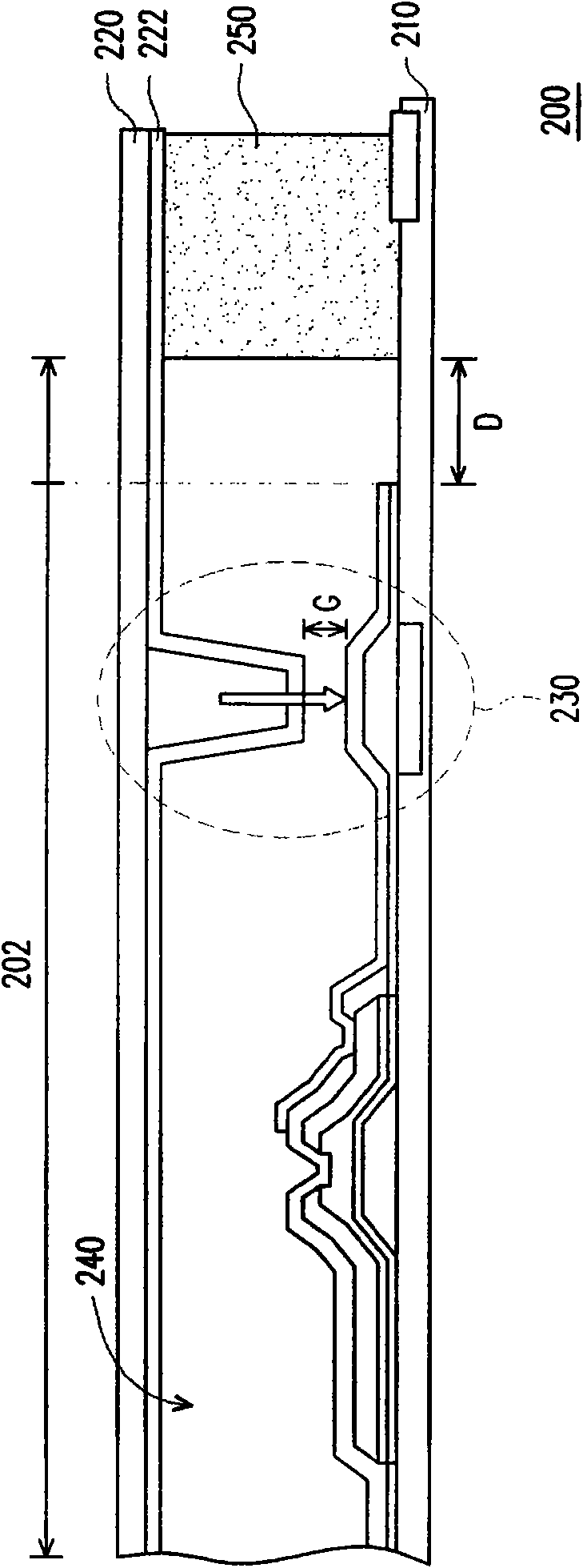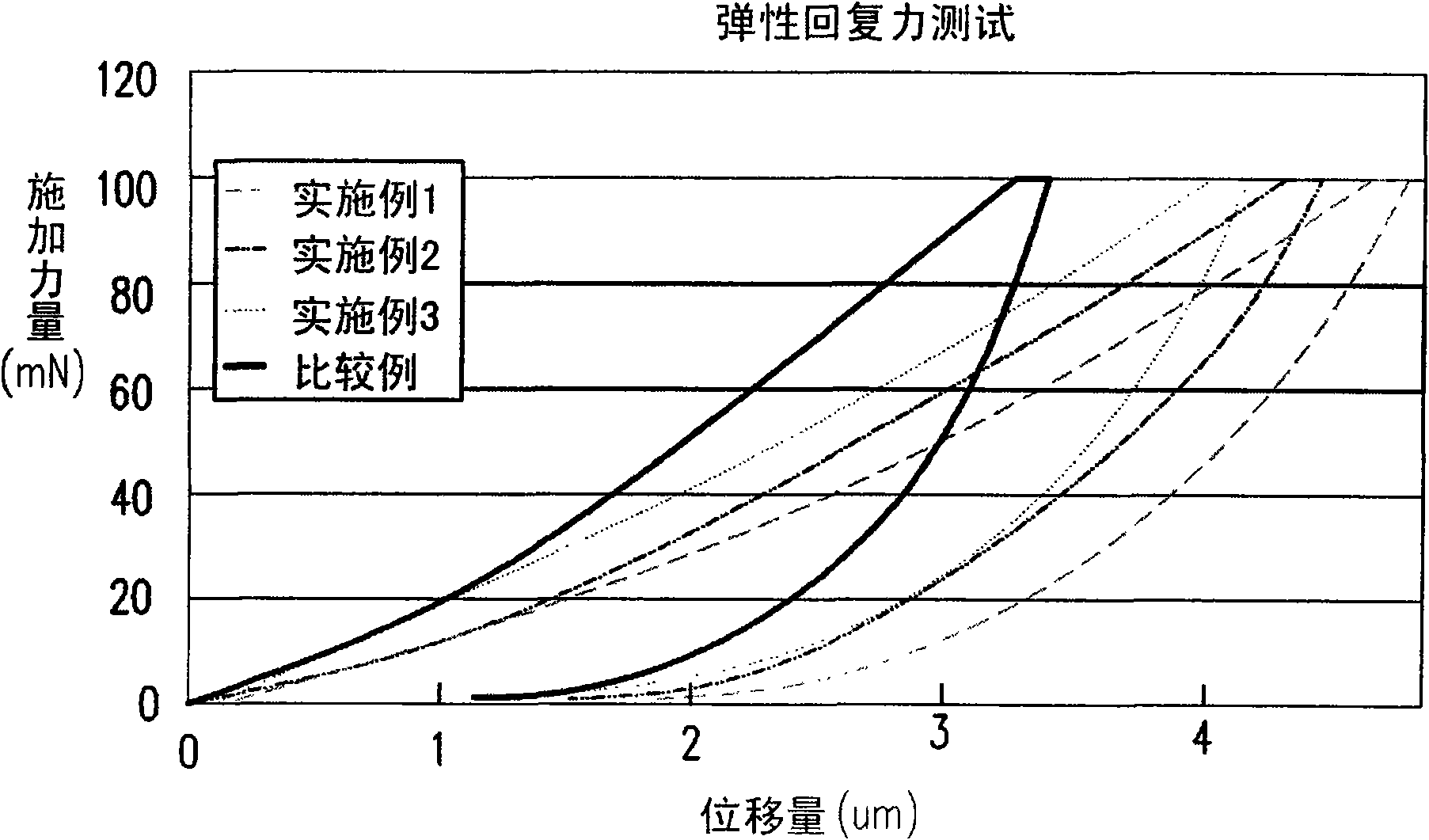Touch-sensitive display panel, composition for forming sealant and sealant
A display panel and sealant technology, which is applied in the directions of adhesives, non-polymer organic compound adhesives, data processing input/output processes, etc. Display panel aperture ratio and other issues, to achieve the effect of increasing touch sensitivity and excellent elastic recovery
- Summary
- Abstract
- Description
- Claims
- Application Information
AI Technical Summary
Problems solved by technology
Method used
Image
Examples
Embodiment 1
[0071] The content of each component in the composition used to form the sealant 250 is shown in Table 1. In Example 1, the bisphenol A epoxy monoacrylate monomer has 33 weight percent, the acrylic monomer has 8 weight percent, the photoinitiator has 0.8 weight percent, the hardener has 4 weight percent, and the bisphenol A The type epoxy diacrylate monomer has 23 weight percent and the filler has 27 weight percent.
[0072] The polymer formed by the above composition after a polymerization reaction is used as the sealant 250 in the touch display panel 200. The sealant 250 undergoes an elastic restoring force test after light hardening and thermal hardening. The conditions of the elastic restoring force test are: different loads are applied to the sealant 250, and the deformation of the sealant 250 is measured. The test The results are shown in Table 2 and figure 2 in. Also, let the displacement of the sealant 250 in its original state when no force is applied be zero, and the...
Embodiment 2
[0076] The content of each component in the composition used to form the sealant 250 is shown in Table 1. In this example 2, the bisphenol A epoxy monoacrylate monomer has 33 weight percent, the acrylic monomer has 5 weight percent, the photoinitiator has 0.5 weight percent, the hardener has 4 weight percent, and the bisphenol A The type epoxy diacrylate monomer has 22 weight percent and the filler has 27 weight percent.
[0077] The polymer formed by the above composition after a polymerization reaction is used as the sealant 250 in the touch display panel 200. The sealant 250 undergoes an elastic recovery test after light curing and thermal curing. The test results are shown in Table 2 and figure 2 in. The conditions of the elastic restoring force test are the same as above, and according to the calculation method of the elastic restoring force described above, the elastic restoring force RR of Example 2 is substantially 70.78%.
Embodiment 3
[0079] The content of each component in the composition used to form the sealant 250 is shown in Table 1. In this embodiment 3, the bisphenol A epoxy monoacrylate monomer has 33 weight percent, the acrylic monomer has 2.5 weight percent, the photoinitiator has 0.25 weight percent, the hardener has 4 weight percent, and the bisphenol A The type epoxy diacrylate monomer has 30.5 weight percent and the filler has 27 weight percent.
[0080] The polymer formed by the above composition after a polymerization reaction is used as the sealant 250 in the touch display panel 200. The sealant 250 undergoes an elastic recovery test after light curing and thermal curing. The test results are shown in Table 2 and figure 2 in. The conditions of the elastic restoring force test are the same as above, and according to the calculation method of the elastic restoring force described above, the elastic restoring force RR of Example 3 is substantially 64.45%.
PUM
 Login to View More
Login to View More Abstract
Description
Claims
Application Information
 Login to View More
Login to View More - R&D
- Intellectual Property
- Life Sciences
- Materials
- Tech Scout
- Unparalleled Data Quality
- Higher Quality Content
- 60% Fewer Hallucinations
Browse by: Latest US Patents, China's latest patents, Technical Efficacy Thesaurus, Application Domain, Technology Topic, Popular Technical Reports.
© 2025 PatSnap. All rights reserved.Legal|Privacy policy|Modern Slavery Act Transparency Statement|Sitemap|About US| Contact US: help@patsnap.com



